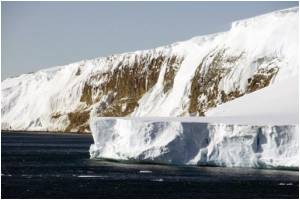Abundant and diverse metabolically active bacteria have been discovered by scientists in the brine of an Antarctic lake sealed under more than 65 feet of ice.

"This provides us with new boundary conditions on the limits for life," said Doran.
"The low temperature or high salinity on their own are limiting, but combined with an absence of solar energy or any new inputs from the atmosphere, they make this a very tough place to make a living," he stated.
The researchers drilled out cores of ice, using sanitary procedures and equipment. They collected samples of brine within the ice and assessed its chemical qualities and potential for sustaining life.
They found that the brine is oxygen-free, slightly acidic, and contains high levels of organic carbon, molecular hydrogen, and both oxidized and reduced compounds. The findings were unexpected because of the extremely salty, dark, cold, isolated ecosystem within the ice.
"Geochemical analyses suggest that chemical reactions between the brine and the underlying sediment generate nitrous oxide and molecular hydrogen. The hydrogen may provide some of the energy needed to support microbes," said Kenig.
Advertisement
"We'd also like to get some sediment cores from below that to better establish the history of the lake. In the meantime, we are using radar and other geophysical techniques to probe what lies beneath," he added.
Advertisement
The discovery was described in this week's issue of the Proceedings of the National Academy of Sciences.
Source-ANI








